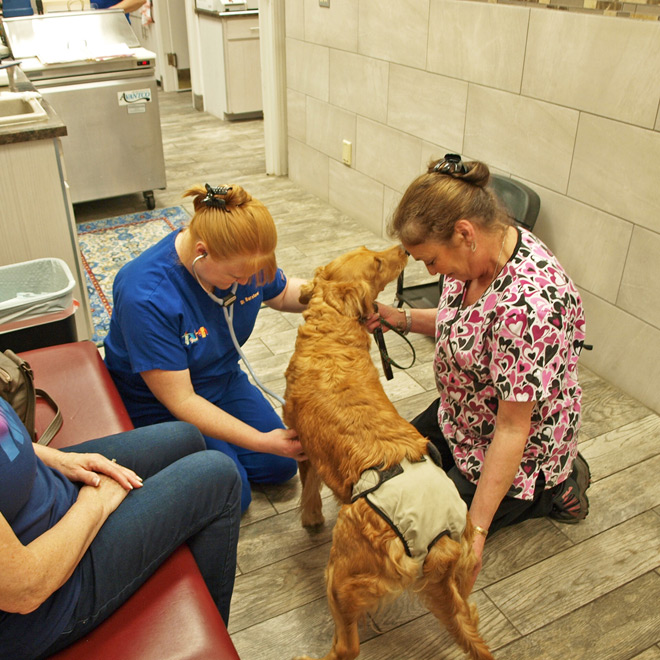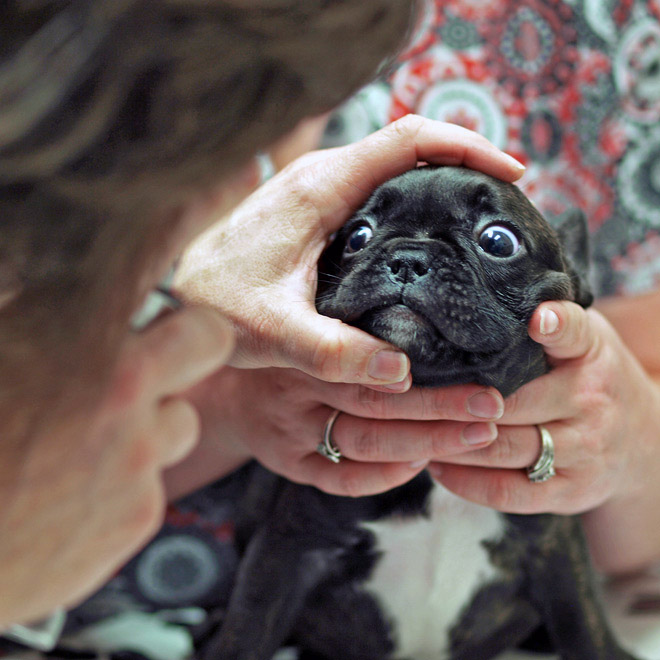Screening for Genetic Disorders
Screening For Genetic Disorders:
Each breed and family of dogs within a breed has a different set of potential inherited disorders. Your veterinarian and breeder can help you identify which problems should be screened for in your dog. Proper genetic screening for selection of breeders minimizes inherited congenital defects.
DNA Testing:
New DNA tests become available frequently. They range from tests to predict coat color and length to tests associated with life-threatening defects. We recommend that each breeder research current tests and familiarize themselves with defects and tests specific to their breed. Even the best-informed veterinarian is unlikely to know about every available DNA test for each breed as the research is changing frequently.

Miscellaneous:
Some breeds may be candidates for other health screens. These include testing for thyroid disease, von Willdebrand's disease (a bleeding disorder), heart disease, and deafness. In addition, dogs exhibiting or carrying genes for certain health problems felt to be inherited such as epilepsy, should not be bred.

Eyes:
The Canine Eye Registry Foundation (ERD), part of OFA, in the USA registers dogs that are found to be clear of eye problems by a board certified Veterinary Ophthalmologist (AVCO). There are many inherited ocular disorders such as cataracts, glaucoma, and retinal diseases. All breeds should have their eyes examined prior to breeding and on an annual basis thereafter, particularly if these dogs or their offspring are still in your breeding program.
Hips And Joints:
Regardless of size, there are a variety of joint problems found in most breeds. Hip dysplasia is probably the best known problem. This is a malformation of the ball and socket of the hip joint, found primarily in large breed dogs, which leads to premature development of arthritis in the hips. In many breeds, 30% and up of individuals may be affected.
The Orthopedic Foundation for Animals (OFA) is an organization which provides certification based on pelvic x-rays that the dog being evaluated does not show radiographic evidence of hip dysplasia. To have your dog certified by OFA, he or she must be at least two years of age. Carefully positioned x-rays are taken, at times with sedation, by your vet & are submitted for rating by OFA.
OFA issues a rating (excellent, good or fair) and a certification number if the dog "passes". OFA will issue a preliminary rating for dogs less than 2 years of age to aid breeders in their decisions regarding their dog's future. The goal of using dogs in a breeding program with OFA certification is to reduce the incidence of dysplasia in your breed. Selecting dogs that are free of dysplasia and whose parents and relatives were also OFA certified will helpreduce the incidence of hip dysplasia in your lines over time. OFA will also certify elbows (for elbow dysplasia), shoulders (for OCD) and patellas (for patellar luxation) free for defects which can lead to debilitating disease.
An additional method of evaluating hips is a procedure known as PennHipR. This requires general anesthesia and a series of 3 x-rays. The films are submitted to PennHipR at Antech to have measurements taken to compare distracted with compressed views. A number evaluating the amount of laxity or looseness in the hip is reported. This laxity is felt to have predictive value in the development of hip dysplasia.
There are other breed specific orthopedic problems which can affect other joints or the spine.
Thanks to Dr. Marty Greer for sharing this valuable content from her Breeder’s Library
Her book “Canine Reproduction & Neonatology” is invaluable to breeders and is available on Amazon.


 Tap to Call Now
Tap to Call Now